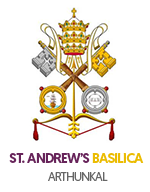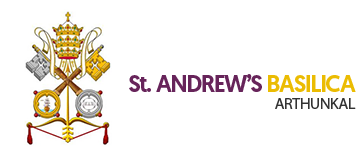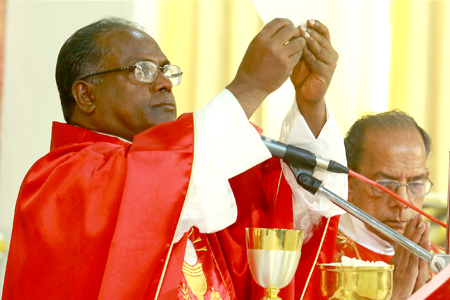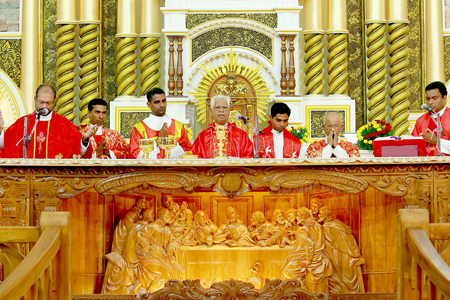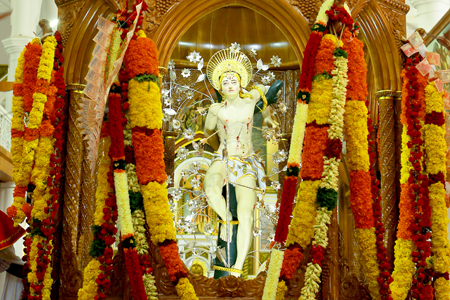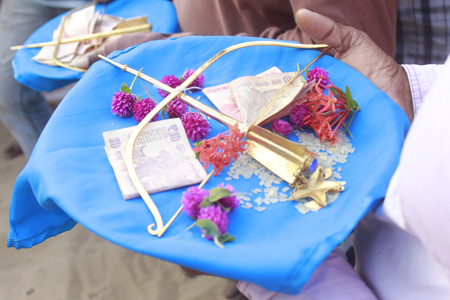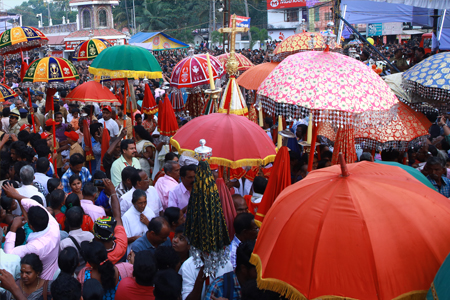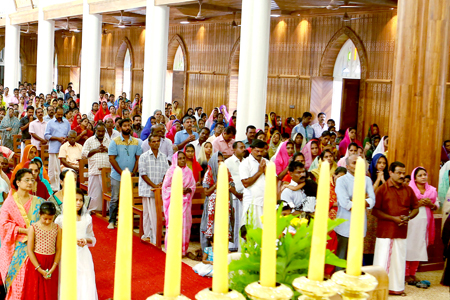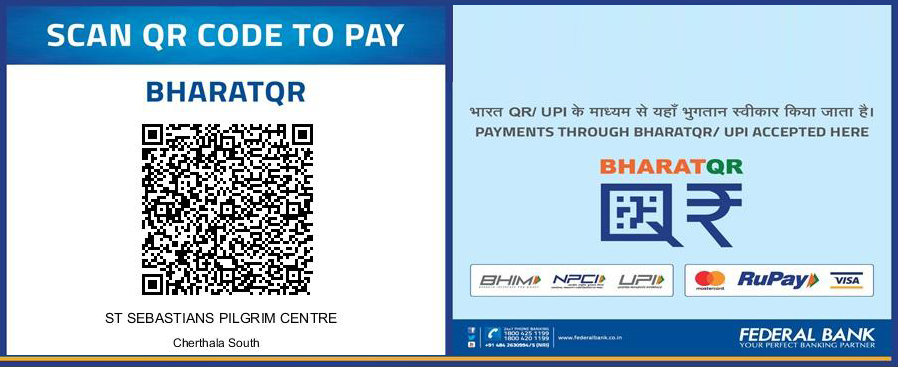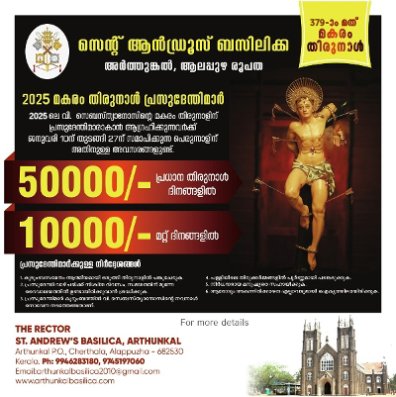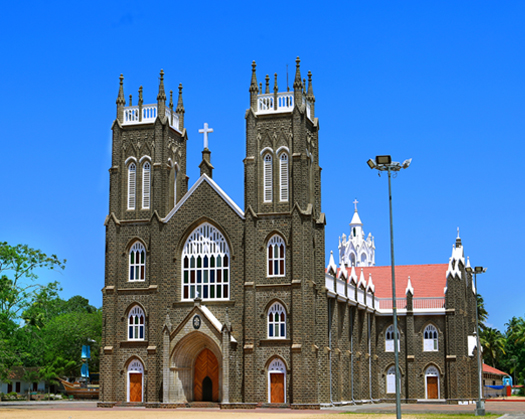The main 'nercha' (offering) in this church is 'Ambum Villum' (Models of Bow and Arrow in gold, silver or rolled gold). Rolling oneself the whole distance from the beach to the church, which is more than a kilometre, carrying the nercha material in hands is an example of deep faith and dedication. To tread around the church in clockwise direction('Valathu') sometimes carrying a stone or brick on head for three times or more, to clean the church or its surroundings, to dedicate onelsef before the saint with priest's blessing and prayer('Samarpanam') are a few of other offerings. The practice of bringing the 'nercha' on elephants accompanied by martial dance which is known as 'Velakali' or 'Parichakali' and native drum band('Chenda melam') still continues. Devotees also offer gold and silver replicas of body parts, rice and pepper.
People of all religions and castes come to pray to St Sebastian the protector against plague and small pox. A local tradition that links Lord Ayyappa of Sabarimala with St Sebastian swells the Hindu participation in the feast. The practice of pilgrims to Sabarima formally ending their pilgrimage in front of St Sebastian by taking off the chain they wear, continues to this day.
The church has been a symbol of communal harmony and good will down the centuries. The tradition enjoins upon those who go to Sabarimala to visit St Sebastian, Arthunkal Veluthachan as he was popularly called on the coast. The belief is that Loard Ayyappa and St Sebastian are brothers. How such a tradition got evolved, it is difficult to decipher; but it has definitely contributed to the communal harmony and mutual trust that has marked the relation between different communities.

